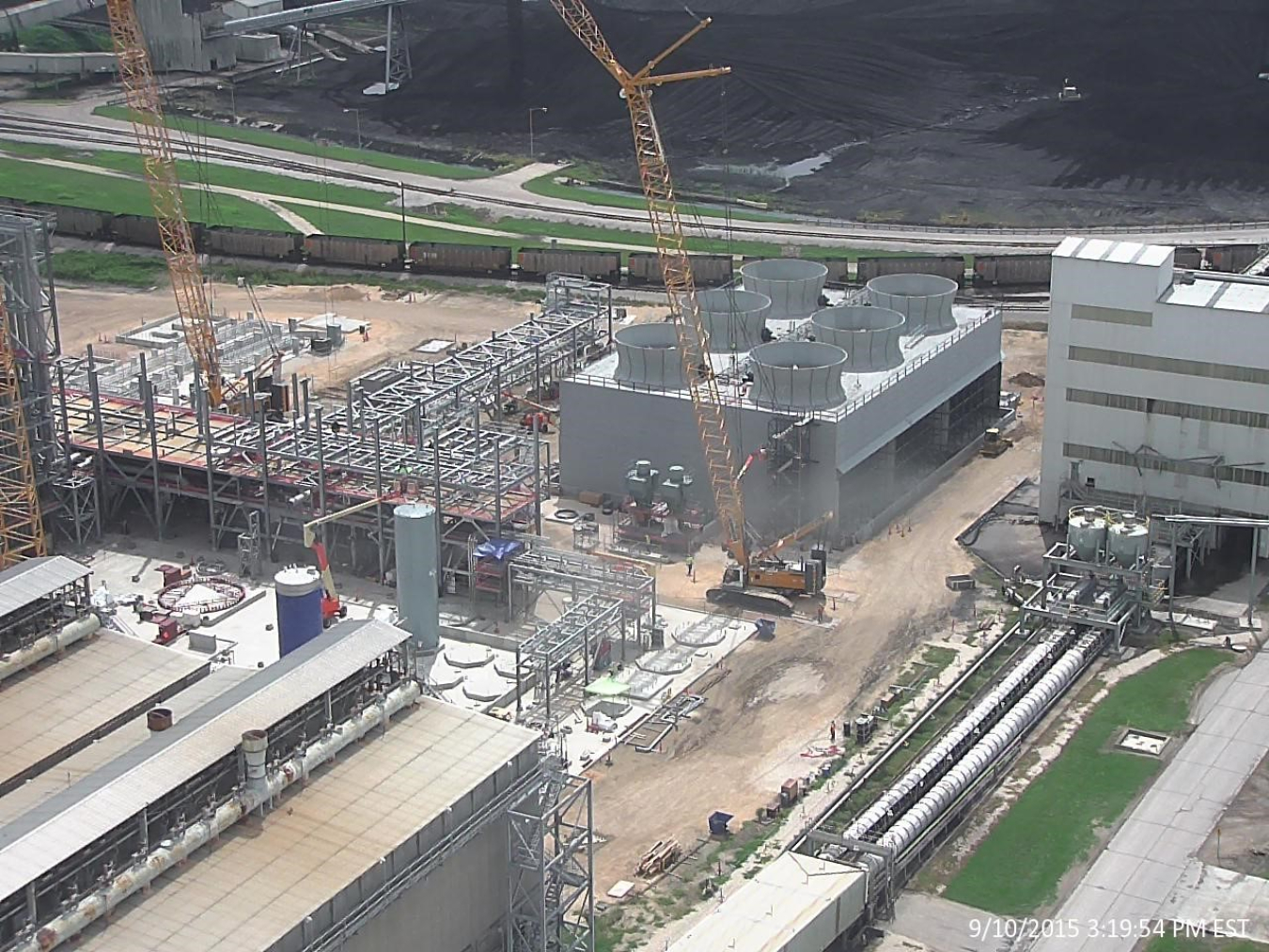
The project will demonstrate Mitsubishi Heavy Industries' (MHI) CO2 capture technology at an existing coal-fired power plant.
PETRA NOVA CCS PROJECT
On June 18, 2010, the U.S. Department of Energy (DOE) announced the signing of a Cooperative Agreement with NRG Energy Inc. (NRG) for the W.A. Parish Post-Combustion CCS Sequestration project. The project ownership was later changed to Petra Nova Parish Holdings, LLC (Petra Nova), a 50/50 joint venture between NRG Energy and JX Nippon Oil & Gas Exploration. The DOE is providing up to $190 million in total cost share with $167 million in financial assistance through the original Clean Coal Power Initiative (CCPI) Round 3, which includes funding from the Recovery Act, and additional $23 million in February 2016 under the Section 313 of the FY2016 Consolidated Appropriations Act. Petra Nova received around 15% of the $160 million based on project recipient cost share under the Section 313 of the FY2016 Consolidated Appropriations Act mandated reallocation of funds. The goal of this project is to demonstrate the addition of a commercial-scale, post-combustion carbon capture technology to the existing coal-fired W.A. Parish Generating Station.
The Petra Nova CCS project is designed to capture approximately 90 percent of the carbon dioxide (CO2) from a 240 MW slipstream of flue gas and use or sequester approximately 1.4 million metric tons of this greenhouse gas annually. The project will utilize a proven carbon capture process, which was jointly developed by Mitsubishi Heavy Industries, Ltd. (MHI) and the Kansai Electric Power Co., that uses a high-performance solvent for CO2 absorption and desorption. The captured CO2 will be compressed and transported through an 80 mile pipeline to an operating oil field where it will be utilized for enhanced oil recovery (EOR) and ultimately sequestered. The scale of the project has been increased because the original 60 MW project was determined to be too small to immediately induce significant oil production. The captured CO2 will be compressed, dried, and then transported via pipeline to Hilcorp’s West Ranch oil field, located near Vanderbilt, Texas. The demonstration project became operational in January 2017.
The Petra Nova CCS project is located in Thompsons, Texas, southwest of Houston, Texas. Project partners include: Mitsubishi Heavy Industries America, Sargent & Lundy, The Industrial Company, and the University of Texas, Bureau of Economic Geology.
TIMELINE
DRAFT EIS ISSUED
On September 21, 2012, the Department of Energy released the draft Environmental Impact Statement for the Petra Nova CCS project for public comment.
FINAL EIS ISSUED
On March 8, 2013, the Department of Energy released final Environmental Impact Statement for the Petra Nova CCS project for public comment.
RECORD OF DECISION ISSUED
On May 23, 2013, the Department of Energy issued the Record of Decision for the Petra Nova CCS project.
START OF CONSTRUCTION
On July 15, 2014, the Department of Energy – in partnership with NRG Energy Inc. and JX Nippon – announced the start of construction on the Petra Nova CCS Project.
GROUNDBREAKING
A groundbreaking ceremony was held on September 5, 2014.
CURRENT STATUS
January 10, 2017, NRG Energy, Inc. and JX Nippon Oil & Gas Exploration Corporation completed the project construction on-budget and on-schedule. Commercial operations have commenced as planned. Petra Nova is the world’s largest post-combustion carbon capture system. Link to news release. The Petra Nova project official ribbon cutting ceremony took place on April 13, 2017, and was attended by the Secretary of Energy Rick Perry, the Governor of Texas Greg Abbott, and CEO’s of NRG, JX Nippon, and Hilcorp. Link to news release.
<p><a href="https://www.facebook.com/FossilEnergy" target="_blank">[[{"type":"media","view_mode":"media_large","fid":"584651","attributes":{"alt":"Fossil Energy on Facebook","class":"media-image caption","height":"83","style":"WIDTH: 42px; HEIGHT: 50px","typeof":"foaf:Image","width":"69"}}]]</a><a href="https://www.twitter.com/fossilenergygov" target="_blank">[[{"type":"media","view_mode":"media_large","fid":"584656","attributes":{"alt":"Fossil Energy on Twitter","class":"media-image caption","height":"83","style":"WIDTH: 43px; HEIGHT: 50px","typeof":"foaf:Image","width":"71"}}]]</a><a href="/node/921931" target="_blank">[[{"type":"media","view_mode":"media_large","fid":"584661","attributes":{"alt":"Sign up for NewsAlerts","class":"media-image caption","height":"83","style":"WIDTH: 45px; HEIGHT: 50px","typeof":"foaf:Image","width":"75"}}]]</a><a href="/node/624156">[[{"type":"media","view_mode":"media_large","fid":"584666","attributes":{"alt":"Fossil Energy RSS Feeds","class":"media-image caption","height":"83","style":"WIDTH: 40px; HEIGHT: 50px","typeof":"foaf:Image","width":"67"}}]]</a><a href="http://www.flickr.com/photos/79173425@N03/sets/" target="_blank">[[{"type":"media","view_mode":"media_large","fid":"585736","attributes":{"alt":"NETL's Flickr Photostream","class":"media-image caption","height":"67","style":"MARGIN: 1px 5px; WIDTH: 42px; HEIGHT: 42px","typeof":"foaf:Image","width":"67"}}]]</a></p>
